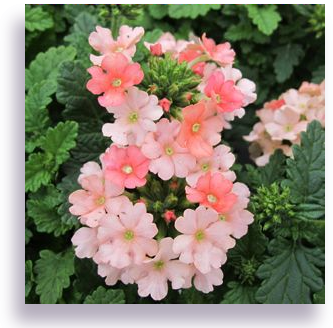 Verbena can be found in many different color ranges today, from whites to blues to peachy tones, and even yellows. Loved by bees and butterflies, this plant is sure to please all who see it. There are mossy cultivars, that seem to creep across the ground, and standing varieties as well.
Verbena can be found in many different color ranges today, from whites to blues to peachy tones, and even yellows. Loved by bees and butterflies, this plant is sure to please all who see it. There are mossy cultivars, that seem to creep across the ground, and standing varieties as well.
Verbena has in the last few years, been bred to withstand the few problems it once had. An edible plant, it is sometimes grown in tea gardens. Verbena grows to heights of 8 to 10 inches, and is good in foundation beds.
In zones 10 and 11, verbena can be grown year round. In zones more northern, it is usually grown out as an annual. You can easily grow verbena from seeds, but do not place it out until the danger of frost has passed and the plant is about 4 or 5 inches tall.
Verbena is also a great hanging basket candidate. Give it a light and airy soil. If you want to make your own that is good for verbena, try theseed starting mix. Just make sure the plant gets abundant sunshine and plenty of moisture. Verbena does love water, whether in a hanging basket or in flower beds.
Verbena performs at it's best when fertilized on a regular basis. Once a month during the months of March through August or September, as the package directs. Do not use granular fertilizer on verbena, it will burn the leaves and flowers. Instead use a high strength 20 20 20 mixture. Here is a link to a good one Jack Foots Fertilizer. Pinch off any dead blooms as you see them, to encourage new flowering. If you do not pinch these off, the plants will discontinue flowering altogether.
This is one plant you do not want to use MiracleGro on. It has too much nitrogen in relationship to the other ingredients, and can burn the plant leaves at edges.
Flowers are fragrant and the nectar attracts bees and butterflies for those of you who enjoy butterfly gardening.
In zones 10 and 11, give verbena a thin layer of well rotted compost in fall, and remove any dead growth. Add mulch as necessary to keep the soil moist.
Up north, you can dig it up and overwinter it in a basement, or plan on starting seed in January or March, or buy new plants.
Tags: verbena, verbena, annual,

